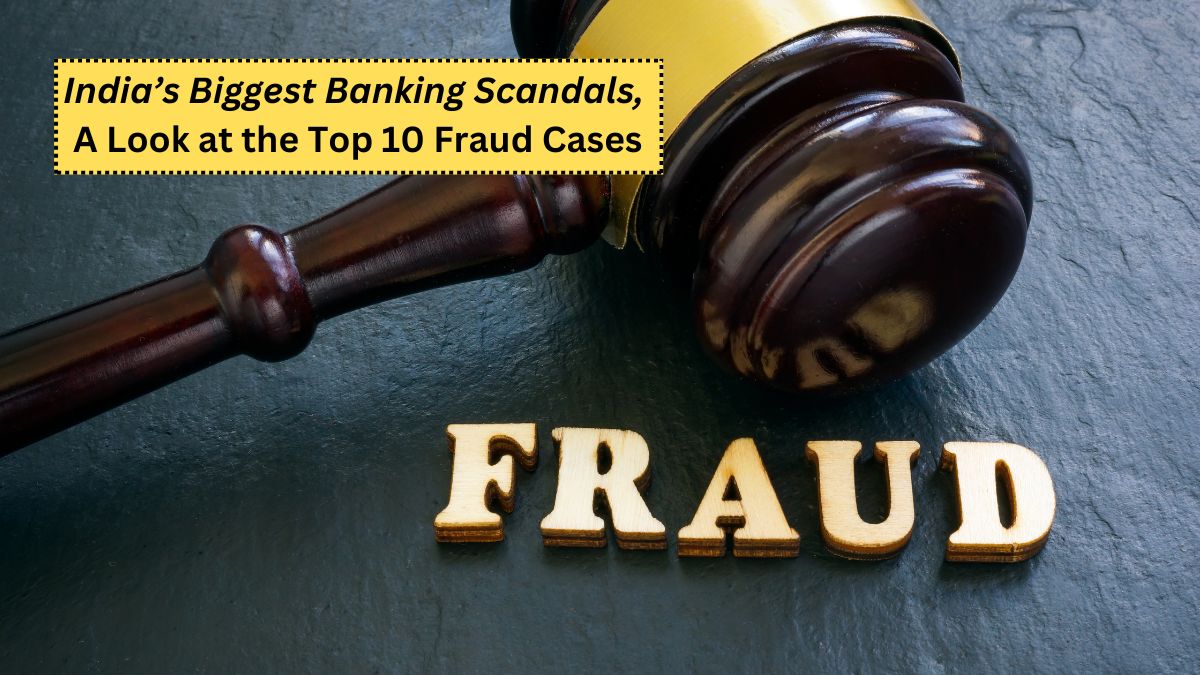India’s Biggest Banking Scandals: India’s financial industry has faced numerous challenges in recent years due to a series of high-profile banking frauds. These incidents have not only shaken the nation’s economic foundation but have also highlighted the critical need for stricter regulatory measures and enhanced surveillance.
This detailed examination explores the top 10 banking scams that have shaped India’s financial landscape. From the elaborate schemes behind the Nirav Modi-PNB scam to the intricate web of deceit in the IL&FS Financial Services crisis, each case offers valuable lessons about how financial fraud unfolds and its far-reaching impacts.
Through this discussion, we aim to analyze the methodology and consequences of these scams while underscoring the lessons learned. By understanding these real-life financial misdeeds, readers can better protect their finances and support efforts to strengthen India’s banking system.
Join us as we delve into the history of India’s most significant financial frauds, their implications, and the path forward.
Highlights of Top 10 Financial Frauds in India
Nirav Modi-PNB Scam
Unfolding in 2018, Nirav Modi, a prominent jeweler, and his associates defrauded Punjab National Bank (PNB) of ₹11,400 crore. This was achieved through fraudulent Letters of Undertaking (LoUs), issued with the complicity of PNB officials, enabling the misappropriation of funds from other banks.
Impact: Tarnished PNB’s reputation, exposed systemic flaws in risk assessment, and called for greater oversight.
Aftermath: Modi and his uncle fled abroad, while Indian authorities initiated extradition efforts.
Vijay Mallya and Kingfisher Airlines Default
Vijay Mallya’s now-defunct Kingfisher Airlines defaulted on ₹9,000 crore in loans, raising concerns about misuse of funds and insufficient due diligence by lenders.
Impact: Financial strain on lending institutions and further scrutiny of lending practices.
Aftermath: Mallya fled to the UK, facing ongoing extradition proceedings.
Rotomac Pens Fraud
The Kothari family’s pen manufacturing business allegedly embezzled ₹3,695 crore by diverting loans from banks for unauthorized purposes.
Impact: Substantial losses for lending banks, revealing loan misuse risks.
Aftermath: Legal action against Vikram Kothari and increased scrutiny of corporate loans.
PMC Bank Crisis
The PMC Bank scandal (2019) exposed financial mismanagement, including concealed non-performing loans worth ₹6,500 crore extended to HDIL.
Impact: Thousands of depositors faced financial distress; cooperative banks came under intense regulatory review.
Aftermath: Legal actions against the management and new governance measures for cooperative banks.
Satyam Computer Services Scam
In 2009, Ramalinga Raju admitted to inflating profits and forging assets at Satyam Computers, revealing deep corporate governance failures.
Impact: Severe losses for shareholders; raised alarms on ethical business practices.
Aftermath: Legal proceedings and eventual acquisition of Satyam by Tech Mahindra.
Bank of Baroda Forex Scam
A 2015 scam uncovered unauthorized outward remittances of ₹6,000 crore, highlighting inadequate internal controls in banking operations.
Impact: Exposed vulnerability to money laundering; harmed institutional reputation.
Aftermath: Strengthened internal mechanisms at the bank.
Saradha Chit Fund Scheme
A massive Ponzi scheme involving fraudulent chit fund operations primarily in West Bengal and Assam defrauded thousands of investors.
Impact: Investor losses exceeding ₹2,500 crore; raised questions about chit fund governance.
Aftermath: Heightened regulation and stricter rules for collective investment schemes.
PACL Fraud
PACL collected ₹49,100 crore through a land-pooling scheme but failed to deliver promised land parcels, running an elaborate Ponzi scheme.
Impact: Devastating losses for rural investors and regulatory oversights exposed.
Aftermath: SEBI termed it a Ponzi scheme and initiated efforts to refund affected investors.
Winsome Diamonds and Forever Diamonds Default
These companies defaulted on loans exceeding ₹7,000 crore due to mismanagement and misappropriation of funds.
Impact: Highlighted systemic weaknesses in assessing and managing loan defaults.
Aftermath: Legal actions, drawing focus to non-performing assets.
IL&FS Financial Crisis
The 2018 crisis unveiled widespread mismanagement in one of India’s largest infrastructure lenders, triggering a liquidity crunch across markets.
Impact: Exposed weak corporate governance; led to financial panic.
Aftermath: Government takeover and restructuring efforts.
Lessons Learned and Safeguards
Vigilance and Oversight
Regular audits, robust internal controls, and adherence to compliance norms are essential to curb fraudulent activities.
Ethical Governance
Corporates must uphold transparency and ethical standards to foster stakeholder trust and mitigate financial risks.
Regulatory Vigilance
Stronger enforcement by bodies like SEBI and RBI is necessary to prevent fraud and enhance institutional resilience.
Enhanced Due Diligence
Lending institutions must adopt stricter appraisal methods to verify borrowers’ credentials, especially for large loans.
